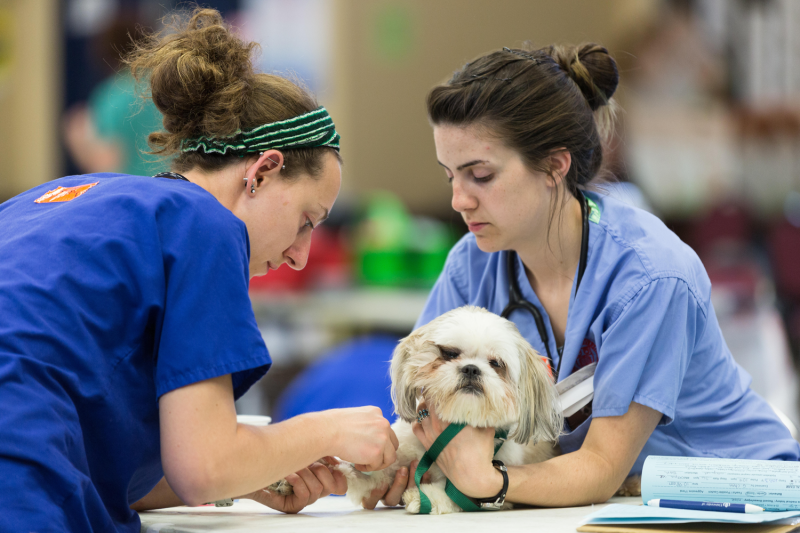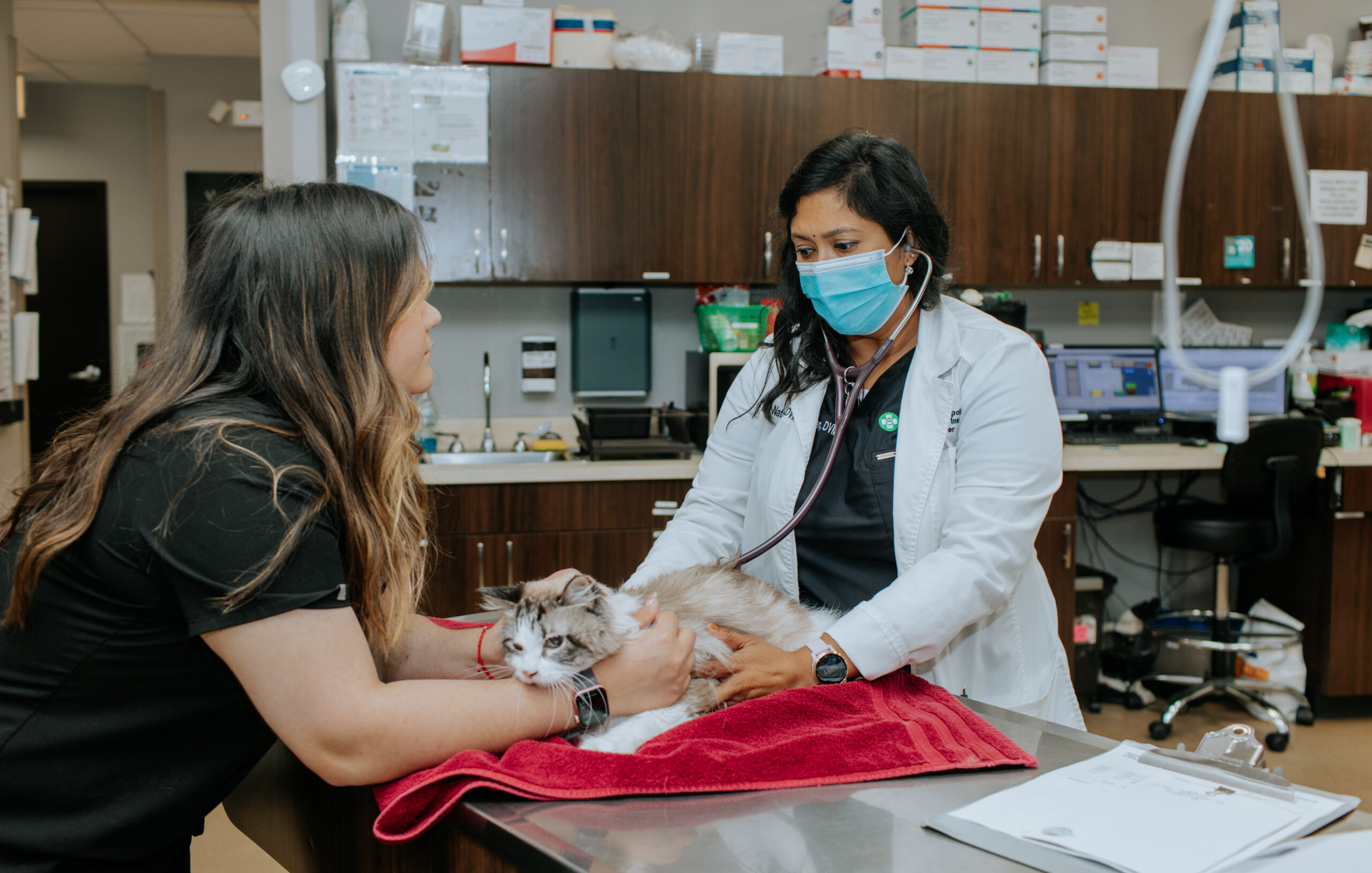Why Every Pet Parent in Bellingham Should Have a Go-To 24 hour vet bellingham
Why Every Pet Parent in Bellingham Should Have a Go-To 24 hour vet bellingham
Blog Article
Everything About Veterinarian Surgical Procedure: Recognizing the Value of Professional Look After Your Pets
Vet surgical treatment is an important element of animal medical care. It encompasses numerous treatments, from regular optional surgeries to immediate treatments. Recognizing the details of these surgical procedures can help animal owners make notified decisions. The preparation, execution, and recuperation stages are necessary for guaranteeing the wellness of animals. With correct expertise, owners can browse the complexities of veterinary care. What aspects should be considered before a pet goes through surgical procedure?
Kinds Of Vet Surgeries
When a pet dog requires surgical intervention, comprehending the numerous kinds of veterinarian surgeries can assist animal proprietors make informed choices. Veterinary surgeries can be generally classified right into three primary types: elective, immediate, and emergency situation surgical treatments. Optional surgeries, such as spaying or neutering, are planned procedures that are not instantly life-threatening. Urgent surgeries, like those for international body removal, have to be performed quickly but are not lethal in the moment. Emergency surgical procedures, such as those attending to serious injury or internal bleeding, are vital and need immediate attention.Additionally, surgical procedures can vary in complexity, ranging from minimally intrusive laparoscopic treatments to a lot more comprehensive open surgeries. Each kind of surgical procedure brings its own risks and recovery processes. Understanding these groups allows family pet proprietors to take part in meaningful conversations with veterinarians, causing better end results for their precious pets.
Getting ready for Your Family pet's Surgical treatment
Getting ready for a pet dog's surgery includes a comprehensive list to assure all essentials are covered. Effective interaction with the veterinarian is important for recognizing the procedure and any required pre-operative actions - emergency vet. Additionally, having clear post-operative care instructions will aid proprietors supply the finest assistance for their recouping animals
Pre-Surgery Checklist Basics
Ensuring a smooth surgical experience for a pet calls for mindful preparation and interest to detail. A pre-surgery list is crucial for pet proprietors to adhere to. Initially, verifying the arranged surgical treatment day and time is important. Proprietors ought to likewise verify that their family pet has actually fasted according to the veterinarian's directions, typically for 8-12 hours prior to surgical procedure. Collecting necessary clinical documents, including vaccination history, is very important for the vet's evaluation. It is additionally recommended to prepare a comfy area in the house for the family pet's recuperation after surgery. Ultimately, proprietors need to have a prepare for transport to and from the vet center, seeing to it that the pet dog is safe and secure and comfy throughout the trip. Adhering to these actions can significantly enhance the medical experience.
Interacting With Your Veterinarian

Reliable communication with the veterinarian is essential for an effective medical experience for pet dogs. Proprietors need to be prepared to discuss their pet's medical history, consisting of any type of pre-existing conditions, drugs, and allergic reactions. This information assists the veterinarian analyze risks and tailor the surgical strategy as necessary. Furthermore, animal owners ought to ask questions concerning the procedure, anesthesia, and anticipated results to guarantee they completely recognize the procedure. Making clear any type of doubts can ease anxiety for both the pet dog and the proprietor. It is likewise vital to connect any behavioral modifications or worries observed in the family pet leading up to the surgical treatment. Eventually, clear dialogue promotes count on and collaboration, ensuring that family pets receive the very best feasible treatment throughout their medical journey.
Post-Operative Care Directions
After talking about the operation with the veterinarian, family pet proprietors ought to focus on post-operative care guidelines to facilitate a smooth recuperation for their pet dogs. These instructions commonly consist of checking the surgical site for indications of infection, such as inflammation or discharge. Pet dogs may need to be kept tranquil and restricted to stop excessive movement that might interrupt recovery. Pain monitoring is vital, so owners need to comply with the vet's assistance on providing medications. In addition, nutritional constraints may be encouraged to prevent gastrointestinal upset. Regular follow-up consultations are essential to ensure appropriate healing and attend to any type of issues. By sticking to these post-operative treatment instructions, pet dog owners can significantly add to their animal's healing and general well-being.
The Surgical Refine Explained
The medical process for pets incorporates crucial actions that assure their security and healing. Pre-surgery preparations are crucial for minimizing risks, while post-operative care guidelines play a crucial duty in promoting recovery. Recognizing these parts assists family pet owners navigate the medical experience much more effectively.
Pre-Surgery Preparations
Before a pet undergoes surgical treatment, a number of important preparations need to occur to ensure a risk-free and effective treatment. A detailed vet examination is crucial to examine the pet dog's general health and wellness and recognize any kind of prospective risks. This may consist of blood examinations, imaging, or various other diagnostics. The veterinarian will also talk about anesthetic options customized to the pet's details requirements. In addition, animal proprietors are typically instructed to hold back food and water for a defined time before surgical procedure to lessen the risk of issues during anesthesia. It is very important for proprietors to provide a total clinical history, including any kind of medicines or allergic reactions, making certain the surgical team has all essential info. Correct communication and adherence to pre-surgery standards can significantly enhance the result of the treatment.
Post-Operative Care Standards
Correct post-operative care is necessary for guaranteeing a pet dog's recovery adhering to surgical procedure. After the procedure, family pets ought to be kept an eye on very closely for any indicators of issues, such as extreme bleeding, swelling, or unusual habits. It is essential to adhere to the vet's guidelines concerning medications, consisting of painkiller and prescription antibiotics. Pets need to be kept in a peaceful, comfy atmosphere to minimize anxiety and promote healing. Limiting task is essential; short, leashed walks might be required, but leaping or running ought to be stayed clear of. Routine follow-up appointments should be scheduled to examine the recovery procedure. Additionally, the medical site must be maintained clean and completely dry, with any signs of infection reported to a veterinarian without delay. Following these guidelines improves healing end results.
Anesthetic and Pain Monitoring
Efficient anesthesia and discomfort monitoring are important elements of vet surgical treatment, making certain that family pets stay comfy and secure throughout the procedure. Vets assess each animal's specific needs, thinking about variables such as age, weight, wellness status, and the kind of surgical treatment being performed.Anesthesia methods normally consist of a combination of pre-anesthetic medicines, induction representatives, and inhalant anesthetics, enabling exact control over the animal's level of consciousness. Surveillance during surgical treatment is vital; vets continually observe vital indicators to attend to any kind of possible issues promptly.Pain management techniques might entail opioids, non-steroidal anti-inflammatory medications (NSAIDs), and local anesthetics, tailored to the pet's particular situation. This multifaceted technique helps decrease discomfort and advertises a smoother surgical experience. By focusing on efficient anesthesia and pain monitoring, veterinary experts boost the total well-being of pet dogs undergoing procedures, guaranteeing they receive the highest criterion of treatment.
Post-Operative Treatment and Recuperation
Adhering to surgical procedure, the emphasis changes to post-operative care and healing, which is necessary for ensuring an animal's secure return to how many vet schools are there in the us normal activities. During this period, family pets require a quiet, comfortable environment to help healing. Owners need to closely monitor their animals for any indicators of pain or uncommon behavior.Veterinary guidelines frequently include certain instructions associated with drug administration, wound care, and nutritional changes. It is essential to stick to these referrals to lessen complications and advertise healing. Family pets may require to be limited from energetic tasks, such as running or jumping, during their healing period (canine tplo surgery).Regular follow-up appointments with the veterinarian permit monitoring of the family pet's development and prompt modifications to the care plan. Offering psychological support and companionship can also boost a pet dog's healing experience, aiding to alleviate stress and anxiety and anxiety. On the whole, persistent post-operative treatment plays a considerable role in accomplishing a successful recovery
Acknowledging Difficulties After Surgical Procedure
Exactly how can animal owners identify difficulties after surgical procedure? Awareness of certain signs is vital for making sure the health of animals throughout recovery. Usual indicators include excessive swelling, redness, or discharge at the medical site, which may signify infection. In addition, consistent discomfort, shown by yawping or unwillingness to relocate, need to motivate instant focus. Modifications in cravings or water consumption can likewise indicate issues; a decline in these behaviors may signal discomfort or distress.Moreover, family pet owners need to check their animals for any kind of unusual actions, such as lethargy or problem breathing, as these can be indications of serious issues. Vomiting or looseness of the bowels adhering to surgical procedure might require urgent vet analysis. Identifying these issues early can substantially impact a family pet's recuperation process, stressing the importance of watchfulness and punctual interaction with a veterinarian for any concerning symptoms.
The Duty of Veterinary Specialists in Surgical Care
Vet specialists play a crucial role in guaranteeing the safety and security and success of operations for pet dogs, specifically following surgical procedure when monitoring and care are paramount. These specialists consist of vets, vet professionals, and assistance team, all of whom contribute specialized skills to the medical process.Before surgery, veterinarians conduct comprehensive evaluations to analyze the animal's health and wellness, ensuring that any hidden conditions are taken care of. Throughout the treatment, the medical team gives anesthesia, maintains sterilized settings, and monitors crucial indications, all vital for reducing risks.Post-operative treatment is just as significant; veterinary experts observe for issues, take care of pain, and overview owners on recovery practices. Their knowledge enables them to acknowledge very early indicators of distress or infection, making sure prompt intervention. Ultimately, the collective efforts of veterinary professionals in surgical treatment foster a risk-free environment, promoting the well-being of pets throughout the medical journey.

Often Asked Concerns
Exactly how Do I Pick the Right Vet Doctor for My Family pet?
Choosing the appropriate vet cosmetic surgeon includes looking into certifications, reviewing testimonials, and assessing the center's setting. It is important to reflect on the cosmetic surgeon's experience with details treatments and their communication design when making a decision.
What Prevail Misconceptions About Vet Surgeries?
Usual mistaken beliefs regarding veterinarian surgeries include beliefs that they are always risky, unneeded, or for emergency situations. Several pet dog owners take too lightly the advantages of precautionary procedures and the ability associated with veterinary surgical care.
Just How Much Will My Animal's Surgery Cost?
The expense of a pet's surgical procedure can vary substantially based upon elements such as the type of procedure, the veterinarian's experience, and geographical location (tplo surgery for dogs). Normally, costs vary from a couple of hundred to several thousand dollars

Can My Pet Eat Before Surgical Treatment?
Prior to surgical procedure, it is normally advised that pets abstain from consuming for a details period. This fasting helps in reducing the danger of issues throughout anesthetic. Owners must consult their veterinarian for specific directions customized to their pet's demands.
What if My Family Pet Has Pre-Existing Health Issues?
When a family pet has pre-existing health and wellness conditions, it's vital for the vet to analyze these elements prior to surgical treatment. This evaluation assurances appropriate precautions are taken, reducing risks and enhancing the animal's overall security throughout the procedure.
Report this page